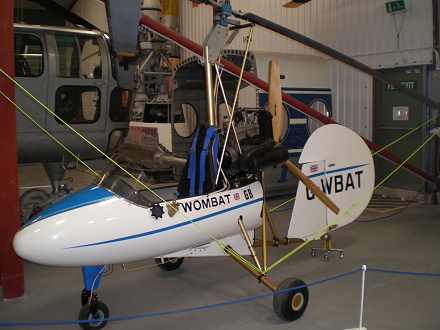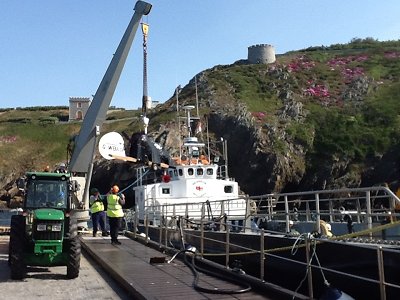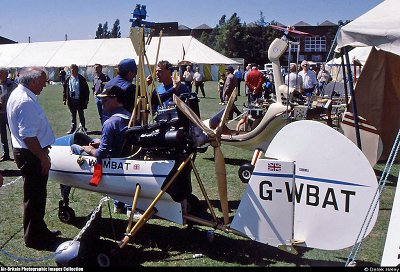Wombat Gyrocopter, G-WBAT
 |
 |
|
On 9th July 2013 the unique Julian CD Wombat gyrocopter, G-WBAT, c/n CJ-001, arrived in Weston-super-Mare, to join the collection on display at The Museum. It had been shipped from Brecqhou (right), in the Channel Islands, via Guernsey and Southampton. The Wombat was designed and built in Cornwall by former speedway rider Chris Julian as a progression of the light autogyro technology originated by Igor Bensen in the United States. Julian used his engineering know-how to carry out significant improvements, performing a series of test flights between late 1991 and early 1997. |
 |
|
On 4th November 1991 the CAA accepted the Wombat for a restricted 'Permit to Test' which allowed it to be flown only by Chris Julian, within the confines of St.Merryn airfield in Cornwall, to develop his aircraft and to gain service experience. In May 1997, aged 60, Mr Julian was killed in an unrelated gyroglider crash at Kemble airfield. He is remembered as an expert gyrocopter pilot and as a talented (though unlicenced) gyro instructor. |
||
| The Wombat is equipped with Dragon Wings
aluminium rotor blades on a 2' 6" hub bar giving
a 22 ft diameter rotor. The standard Bensen off-set gimbal rotor
is used. A 62hp Rotax 532 VL2V, 2-stroke, two cylinder, liquid-cooled
piston engine drives a 60 inch diameter, ground adjustable, GSC
three-blade wooden pusher propeller with a light alloy hub. Fixed
main wheels and a sprung nose wheel with braking, are fitted. The airframe is constructed from aluminium alloy tube with bolted connections. Rotor control is by push-pull rods from the control column. The conventional rudder has a composite skin with a foam core. No horizontal stabiliser is fitted.
|
 Thanks to Derek Heeley for his photograph of Chris Julian's Wombat, G-WBAT, at a Cranfield PFA Rally in July 1990. |
|
| The Wombat and associated design rights passed to Mark Harrisson, a resident of Brecqhou and former Bristow helicopter pilot, who acquired the aircraft, with CAA registration being issued in July 2000. Captain Harrisson eventually abandoned further development and, in 2013, donated the gyrocopter to The Museum where it now forms part of the autogyro collection which dates from 1935 to the present day. | ||